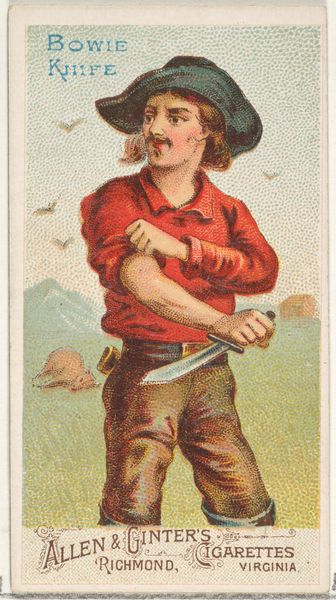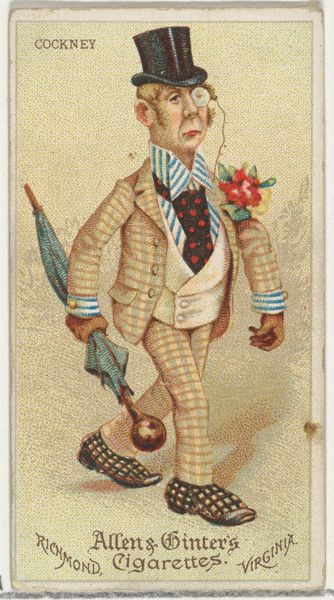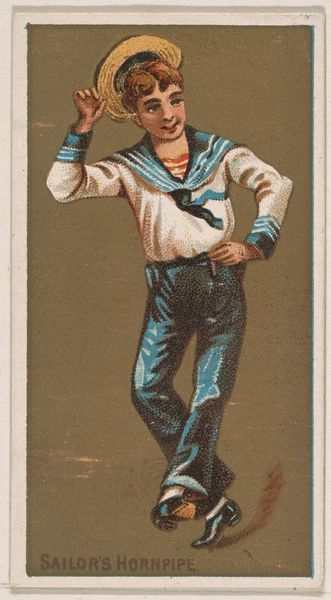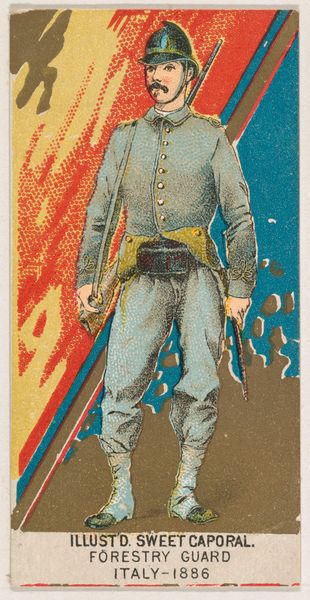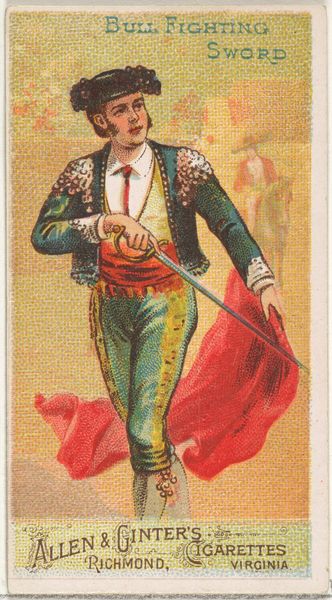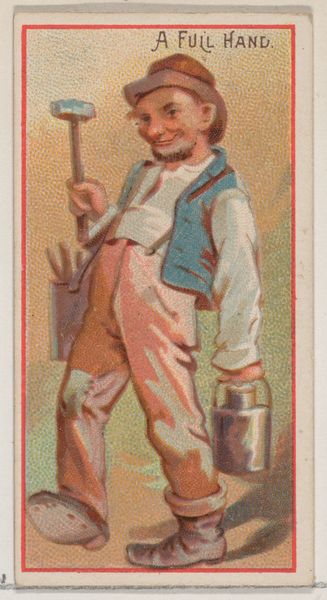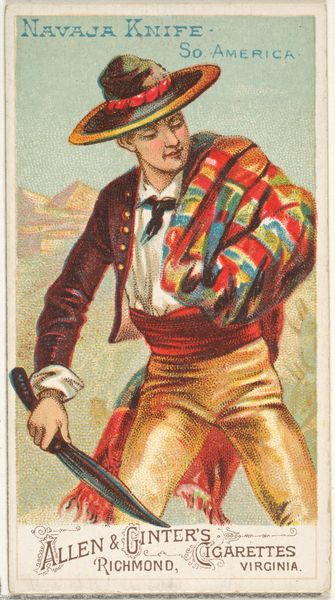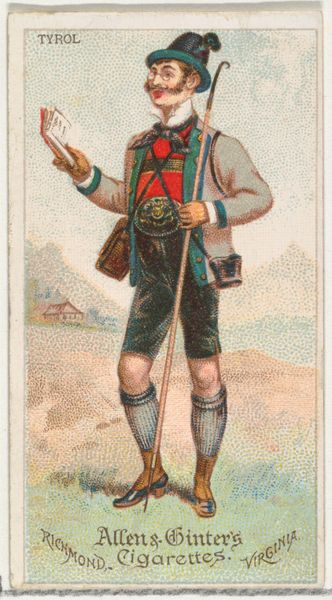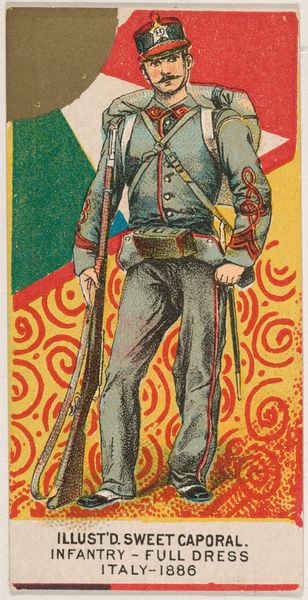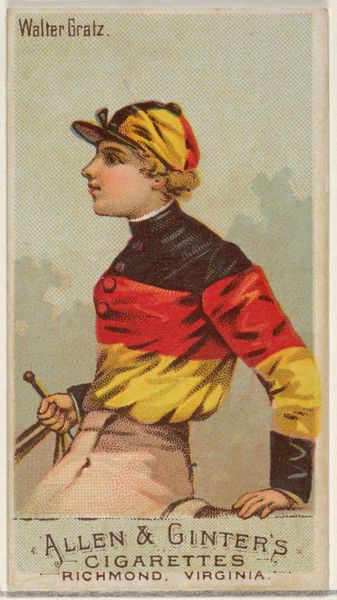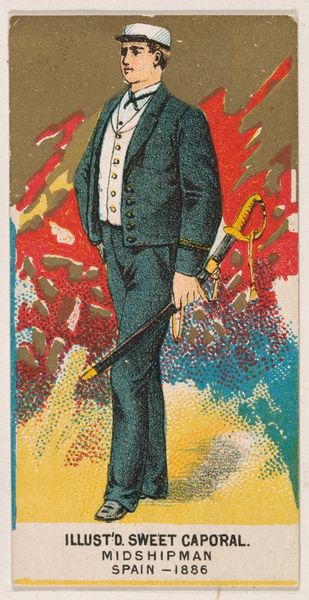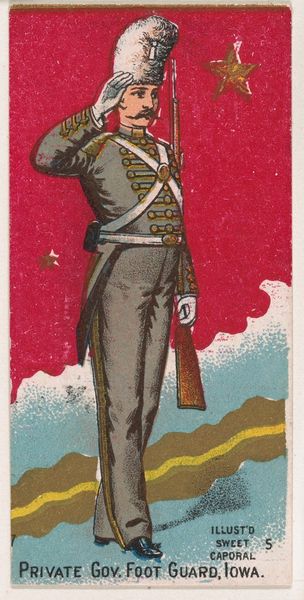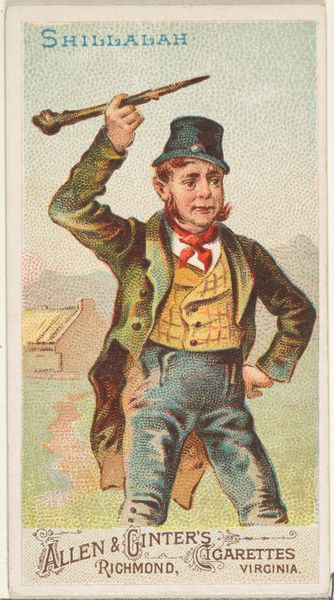
Cutlass, from the Arms of All Nations series (N3) for Allen & Ginter Cigarettes Brands 1887
0:00
0:00
#
portrait
# print
#
watercolour illustration
Dimensions: Sheet: 2 3/4 x 1 1/2 in. (7 x 3.8 cm)
Copyright: Public Domain
Editor: This is "Cutlass, from the Arms of All Nations series," created around 1887 by Allen & Ginter for their cigarette brands. It's a watercolor and print—a trading card, essentially. I’m struck by its almost cartoonish depiction of a sailor. What do you make of it? Curator: For me, this image speaks volumes about the industrial context of its creation. Consider the mass production inherent in cigarette cards: how does the ‘high art’ of watercolor get subsumed into a capitalist venture? Editor: So, the focus isn't necessarily the artistry of the painting itself? Curator: Precisely! The material reality of this card - the paper stock, the printing process, its function as a marketing tool – reveals more about the late 19th century than any artistic intention. The company, Allen & Ginter, and its production of "collectables". Now where can we trace these prints being manufactured and where can we see where the paper was sourced from? Those, to me, are the pertinent questions to explore. Editor: That’s a different way to look at it. I was thinking about the sailor, but you're directing our attention to the factories! It reframes the art entirely. Curator: Indeed. By considering the card as a manufactured object, we challenge conventional notions of art and the value placed on 'originality'. The worth isn’t in the image; it’s in the social relationships it fostered. What value was placed on it in Richmond, Virginia versus Japan during this period of Japonisme? Editor: This makes me think about other examples of how commodities become ‘art’ simply by changing their context. I’ll definitely look at the production and distribution side of these items differently now. Curator: Excellent. By considering labor, materials, and modes of consumption, this shifts from aesthetic appreciation to social commentary, and that’s exactly the perspective that is key when viewing all objects, especially these from times of such imperial ambition.
Comments
No comments
Be the first to comment and join the conversation on the ultimate creative platform.
